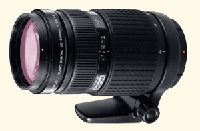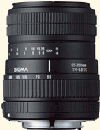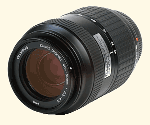
THE CORNUCOPIA



comparing the 4/3rds AF mid-tele zooms
zd 50~200, sigma 55~200, zd 40~150

THE CORNUCOPIA
comparing the 4/3rds AF mid-tele zooms zd 50~200, sigma 55~200, zd 40~150 |
|
INTRODUCTION: I've noticed many E-system users asking about the comparable performance of 4/3rds mid-telephoto lenses and if there is a lot of difference between those currently available. The first ZD lens I added to my E-system kit was the ZD 40-150; I was suitably impressed. There is a report about this lens here. Next I tried the Sigma 55-200 DC - mainly because of its extremely reasonable price - and again was very pleased. I've yet to write a full report on this lens. The ZD 50-200 remained a pipe dream until quite recently when I had the opportunity to purchase a new one for a reasonable amount and it is a revelation. This appears to be a rather illogical way to buy lenses, but available cash and opportunity always plague my purchasing policy! Now owning all three lenses it occurred to me I should undertake some simple comparative testing before parting with any of them. I used my earlier approach to lens testing; taking multiple shots of the same target. My friend Andrzej Wrotniak pointed out that this method is a little 2-dimensional; I agree and am working on different ideas, but for the moment it is all I have. I've included many other comparative shots from the 3 lenses to give you more information, so keep scrolling!
TARGET You may be familiar with my 'test' target. It's not perfect but it does serve the purpose.
It is 10" x 7.5" (4:3) printed on A4 and laminated. It is mounted on a south facing wall and a 4:3 area marked around it with 4 white tipped screws that enables consistent cropping in later post processing. I use my formula of minimum focal length of test lens x 85% = distance from target. This is applied to the three test lenses to give a consistent representation of the lens' performance. Images are taken in A mode with aperture set to lens maximum throughout the zooming range, ISO 100, SHQ. E-1 settings are Sharpness -1, Contrast CS1, Saturation 0. Post processing is kept to a minimum and is restricted to cropping and auto balance only. In addition I set the E-1 mirror lock-up to 3 seconds to provide a shake free exposure. No sharpening is applied. I try to pick a bright but overcast day to avoid direct glare from the sun. Whilst this is the intention occassionally I have to test in conditions not perfect. As with all 'amateur' lens testing the results only represent findings on one day in one set of circumstances and should only be taken as indicative, not definitive. Images are taken at 50 (55 for Sigma), 70, 100, 150 and 200mm with the aperture kept at the lens' maximum. Why? Well Olympus constantly remind us that the ZD lens design and construction enables us to use max aperture with no image degradation. My own observations indicate, in line with most commentators and optical wisdom, that whilst ZD's do perform well wide open they perform best at around mid aperture though this test is primarily designed to see how each of the mid-teles perform wide open. I start with the Zuiko Digital 50-200. Next and without moving the tripod I mount the Sigma DC 55-200 and repeat the process. Finally I mount the ZD 40-150 and repeat the process up to its max focal length of 150mm.
TEST RESULTS GROUP 1: FL = 50mm (SIGMA 55mm)
ZD 50-200 at 50mm
Sigma 55-200 at 55mm
ZD 40-150 at 50mm
COMMENTS: On the face of it I've got to give the best result to the Sigma. This may be due to the additional 5mm of Focal Length over its rivals. There is little to choose between the three, all are a little soft, colour rendering is pale, contrast low and edge definition unsharp.
TEST RESULTS GROUP 2: FL = 70mm
ZD 50-200 at 70mm
Sigma at 70mm
ZD 40-150 at 70mm
COMMENTS: At 70mm there is not much difference between both ZD's. While the Sigma is not giving as good edge definition it is slightly better than the ZD's on colour. All three are starting to sharpen, improve on contrast and improve edge definition. On balance I put the ZD 40-150 marginally ahead though there's very little in it.
TEST RESULTS GROUP 3: FL = 100mm
ZD 50-200 at 100mm
Sigma at 100mm
ZD 40-150 at 100mm
COMMENTS: At 100mm all three results have improved. They are all much sharper, better colour and contrast and improved edge definition. However there is not a huge difference between them though I believe the ZD 40-150 has peaked. On balance I give this result to the ZD 50-200 but the Sigma is not far behind.
TEST RESULTS GROUP 4 : FL = 150mm
ZD 50-200 at 150mm
Sigma at 150mm
ZD 40-150 at 150mm
COMMENTS: At 150mm more improvement for the ZD 50-200 and the Sigma. The ZD 40-150 seems to be a little too contrasty and might be struggling a little though it is very good for a budget lens. The ZD 50-200 is the clear winner here with best sharpness, colour and contrast though the Sigma has it on edge definition.
TEST RESULTS GROUP 5: FL = 200mm
ZD 50-200 at 200mm
Sigma at 200mm
COMMENTS: At 200mm the ZD 50-200 is again the winner. Its better optical construction gives it the edge for all my parameters. Remember this test is at a few score feet from the target only. The Sigma is extremely good for a budget offering but it cannot compete with the more expensive ZD.
SOME DISTANCE IMAGES FOR COMPARISON My test shots of the target are OK as far as they go. Perhaps these following images might add something to your deliberations. Each is taken at maximum aperture then at f=8, from the same place and within seconds of each other. E-1 is tripod mounted and shutter is tripped with remote control. None of these images have been altered in any way other than re-sizing for the web. The crops too are only re-sized.
ZD 40-150mm
ZD 40-150mm at full telephoto wide open.
ZD 40-150mm down to f=8.0 to see how much it sharpens on partial closure.
Above are two crops from the originals. Notice how the crop from the f=8 fragment sharpens up from the one wide open. It's definately sharper, not dramatically but enough to be quite evident. Even so this is an excellent performance from a 'budget' lens. To get maximum resolution stop down a notch or two although, even wide open this zoom will give you good results if you are struggling for light.
Sigma 55-200mm
Sigma 55-200 at full telephoto wide open.
Sigma 55-200mm stopped down to f=8.0 to see how much it sharpens on partial closure.
Above are two crops from the originals. Again the crop from the f=8 shot sharpens up nicely, about the same as the ZD 40-150mm. For a £120 lens of this reach I consider this very good value. It's a tad on the soft side and has a definate yellow cast but, for the money, it makes an ideal travel companion.
ZD 50-200
ZD 50-200 at full telephoto wide open.
ZD 50-200mm stopped down to f=8.0 to see how much it sharpens on partial closure.
Above are two crops from the originals. There is only a smidgin of difference in sharpness between F=3.5 and f=8.0! In fact the result from this lens wide open is sharper than the other two lenses stopped down. This is a remarkable performance. Overall the big ZD is way sharpest of the bunch with best colour consistency and rendering. Its contrast is spot on for me; more than enough for a telephoto but not overdone. COMMENT: First thing I noticed is the difference in focal length between the Sigma and the ZD 50-200mm. Both lenses were set to their maximum yet the results show the ZD is at least 10mm in focal length nearer the subject than the Sigma - or vice versa. Notice too the similarity in colour rendition between the two ZD's - almost identical whereas the Sigma has a strange yellow cast. It's not just in this series of shots either; it seems to be there all the time (I remove all filters before test shots). The two budget offerings are very good for the price and will give average to good results. Both are a tad soft wide open and the Sigma doesn't sharpen up quite as well as the ZD 40-150mm. But the ZD 50-200 is so sharp and clean with lovely colour and contrast it clearly out-performs the others by a considerable margin. However it is an expensive lens - and, as ever, you get what you pay for!
BOKEH There are other considerations to take into account when choosing a telephoto, such as weight and handling as well as cost. There's no doubt the Sigma is small and extremely light for such a powerful tele, but loses out to the other two in optical speed and colour cast. The ZD 40-150 is an improvement optically, has no dicernable cast but does not give the focal length spread. The ZD 50-200 is fast, has ED glass, shows no cast but is considerably larger and heavier than the others. Let's look at one important attribute I touched on before - background blur or 'bokeh'. In many ways the other comparative qualities can be levelled out by manipulation in PS. But bokeh is an an inherent quality of the open aperture lens and no amount of tinkering in PS can accurately reproduce the effect. It is this quality and the lens' low light performance that to me anyway, are the critical factors. When deciding on such a purchase we hope it will stay in your armoury for a long time, so getting it right is important. We've already seen the pricey ZD 50-200mm out-performs the other two in terms of colour rendition, sharpness and contrast. We know faster zooms give the photographer a better choice in any lighting condition. But, inevitably lens speed and bulk go together. It's the way it is. Have a look at the images here. I've deliberately chosen this buzy backdrop to make the point. But there are times when you will have no choice and the wide aperture lens is the only way to blur the background or make your subject stand out. None of the images have been altered in any way other than re-sizing for the web.
BOKEH GROUP 1: AT 150mm
ZD 40-150 at 150mm closed aperture
ZD 40-150 at 150mm wide open, bokeh not bad
Sigma 55-200 at 150mm closed aperture
Sigma 55-200 at 150mm wide open, bokeh not quite as good as the 40-150
ZD 50-200 at 150mm aperture closed
ZD 50-200 at 150mm wide open, bokeh noticably better than the rivals
BOKEH GROUP 2: AT 200mm
Sigma 55-200 at 200mm aperture closed
Sigma 55-200 at 200mm wide open, bokeh not sufficient to disguise the backdrop
ZD 50-200 at 200mm aperture closed
ZD 50-200 at 200mm wide open, bokeh virtually eliminates hard background edges
OPINION Compare the way this Maneki Neko or 'beckoning cat' either disappears into the fussy background or leaps out at the viewer. This effect is directly attributable to lens bokeh. The larger the aperture available, the better the effect. Judge for yourself. The ZD 50-200 has it by miles.
I include the photo below for no other reason than this plane flew over (30,000ft) just as I was finishing the Maneki Neko shots. It is with the ZD 50-200 at 200mm wide open and handheld. Post processing in PSCS was restricted to auto balance, slight brightness and contrast enhancement and conversion to mono. (No cropping or enlargement).
ZD 50-200mm at 200mm wide open and handheld
CONCLUSION Having used these three lens extensively my opinion is the ZD 50-200's quality of glass, build, performance and results well justifies its purchase and price. The ZD 40-150 is simply excellent for the price being sharp and cast free. The Sigma 55-200 DC is fine for what it is - a lightweight telephoto ideal for travelling that is sharp enough for general use but has a strange yellow cast. Only you can make the final decision as personal finances ultimately rule decisions. (But if I'd known then what I'm passing to you now I'd have bought the ZD50-200mm first).
A reminder of the cost of the current 4/3rd medium telephoto zoom options for your E-System camera.
ZD 50-200 Approx £650.00 (if you shop around) Sigma 55-200 Approx £120.00 (this price tends to fluctuate by around £15 either side) ZD 40-150 Approx £150 - £200.00 (look out for bargains when users upgrade this 'kit' lens)
If you're like me you'll might think too long before buying. Or you might be of a mind of 'just buy it.' Whichever you are - I hope this page has enlightened your decision.
|
|
HOME |
INTRO |
BOOKS |
OLYMPUS CIRCLE |
QUEST |
TOC MEMBERS |
GALLERIES
|
| Posted July 2005 14:04 | Copyright © 2005 John Foster |